 RAFCald by Eric Bergerud, on Flickr
RAFCald by Eric Bergerud, on Flickr
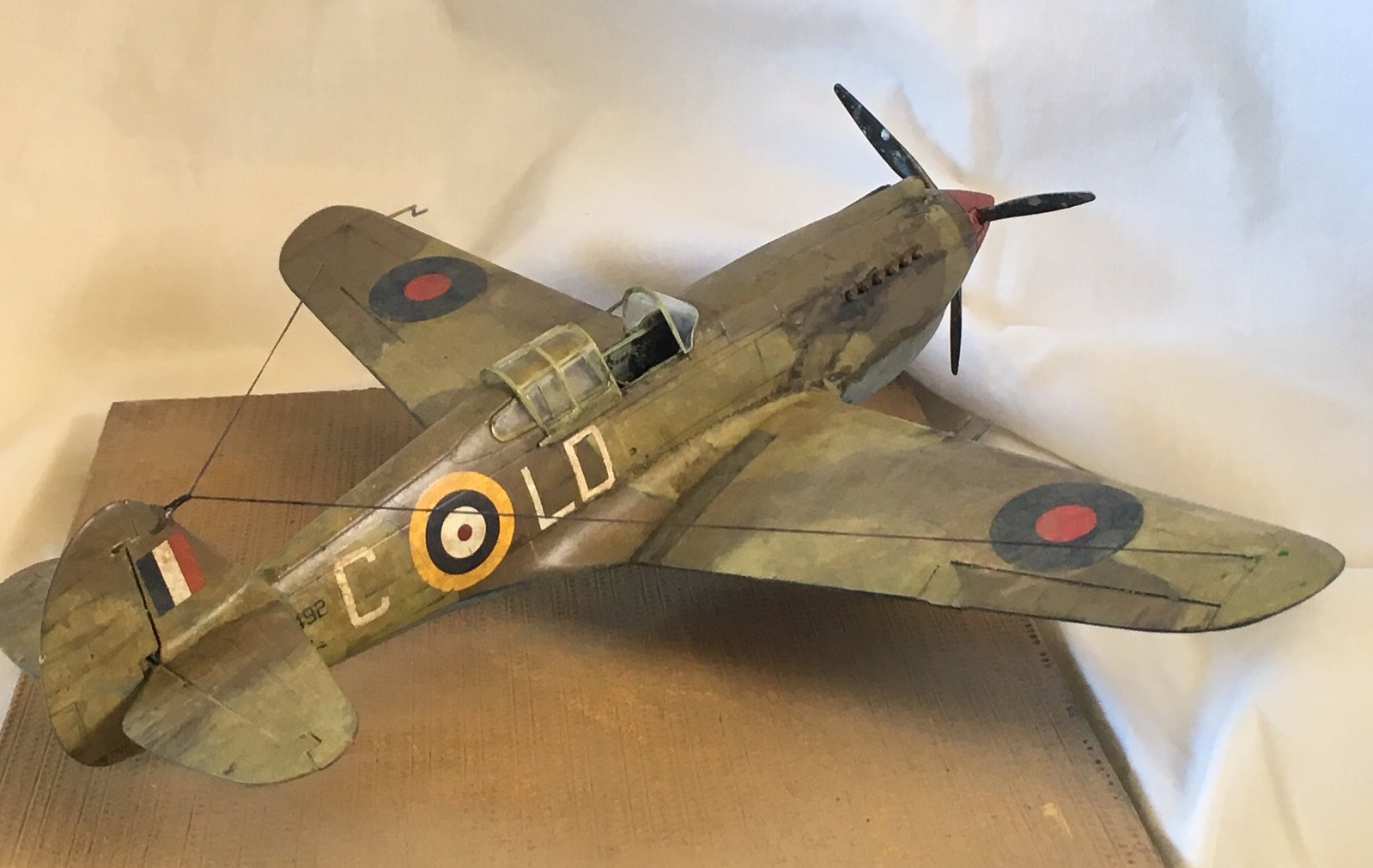 iprr! by Eric Bergerud, on Flickr
iprr! by Eric Bergerud, on Flickr
Airfix 1/48 P-40B
Paint: Golden High Flow Acrylics (Azure, Middlestone, Dark Earth mixes)
AML Camo Masks: Montex Canopy Mask & ID Stencils
Weathering: Salt fading, Wilder & Gamblin oils, Iwata Com.Art (panel lines and fluids), Prisomcolor pencils (panel lines)
The Kit: By and large this was a very good kit. I think some modelers, especially Eduard fans, might find the surface detail a little sparse, but I thought it was fine. Airfix didn't always pay attention to detail - there was bad fit on the leading edge wheel well fairings - fortunately I was warned about that by very good online build and fixed it with rod and Gunze plastic slurry. One side of the fuselage was just a little larger on the top leading me to think I had a gap. Glad I looked close - it wasn't a gap at all, just one side was "proud". When sanded the fuselage fit together over the installed cockpit perfectly. Also the landing gear were splendidly made - that can be trouble. The clear parts also fit well. The instructions are very good, although Humbrol paint call-outs are a pain. Some of the smaller fits were a headache because Airfix tried to try Tamiya style engineering without their engineers. Tamiya it isn't. I would pay the extra for a Tamiya kit. However, Airfix has been putting out some very interesting kits - like this one - and Tamiya doles out two or three gems a year. So I'm hoping the other "new" Airfix kits I have will work as well (Hurricane, JU-87B, BF-109E, HE-111, B-17 and a C-47 on deck for a C-47/DC3 GB. And I like the look of their Wellington.) Here's the kit along with the AML Camo masks I used.
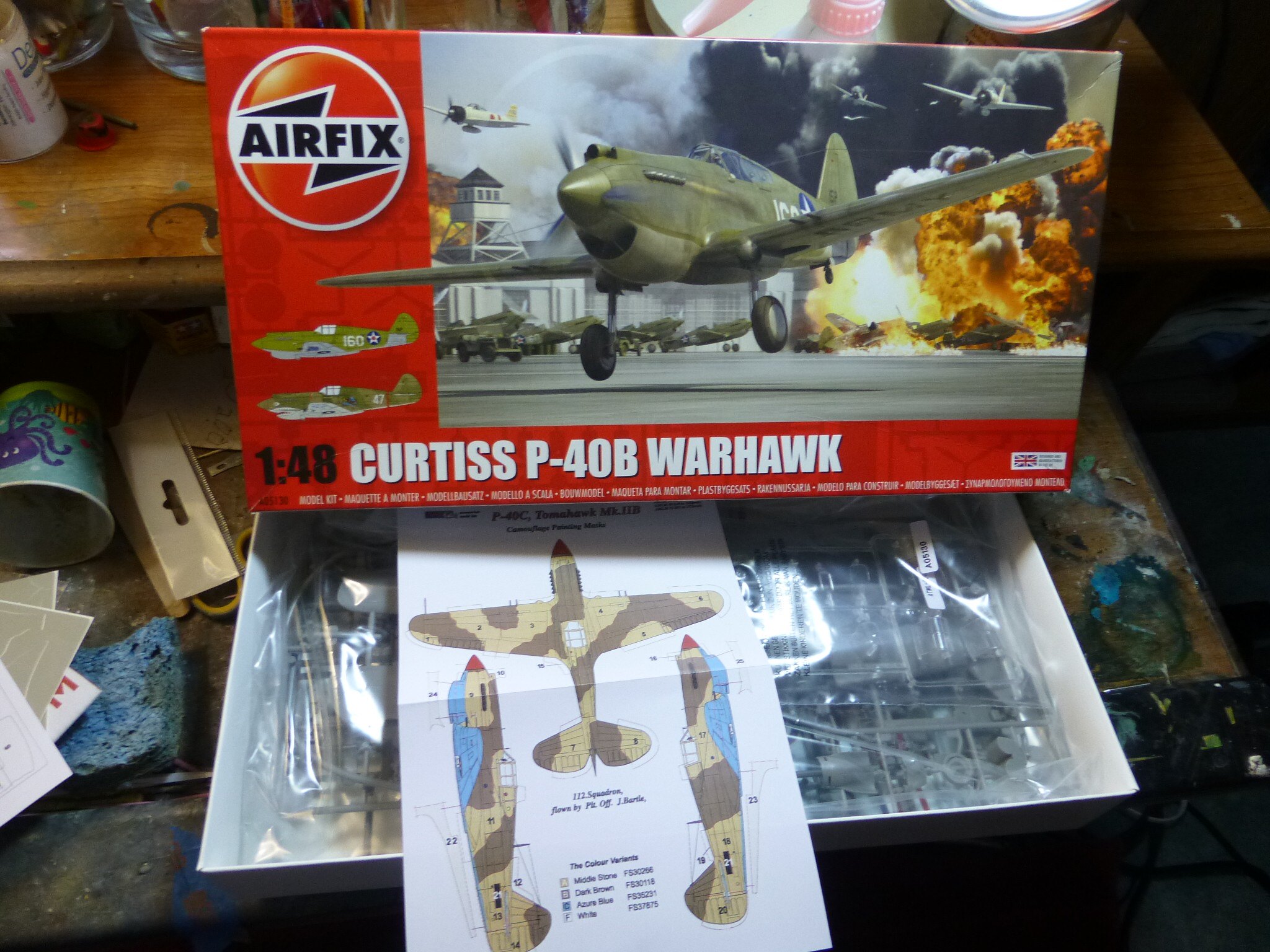 kit by Eric Bergerud, on Flickr
kit by Eric Bergerud, on Flickr
I'll do a quick summary on the painting and weathering. The base colors are all my own mixes from Golden's splendid High Flow Acrylics, a brand that is now my "go to" paint. (I really prefer water based acrylics, so that leaves Tamiya, Gunze and MPR out - splendid paints though they are.) I have become a convert to "black basing" and I used it here. (Black basing is championed by a splendid modeler named Doog: check "Doog's Models" on YouTube, and see his series on black basing for the details.) This technique requires a black primer sprayed over the completed kit. Once on, you paint "small": draw fine lines and squiggles of well thinned base colors of different hues: this is called "mottling". It's a modular approach - each area that will have a different base color gets a differing collection of mottling colors. Like a dope I forgot to take a pic of the P-40 primed and/or mottled. Here's a pic from a Wildcat I recently built that shows what I'm talking about:
 primed by Eric Bergerud, on Flickr
primed by Eric Bergerud, on Flickr
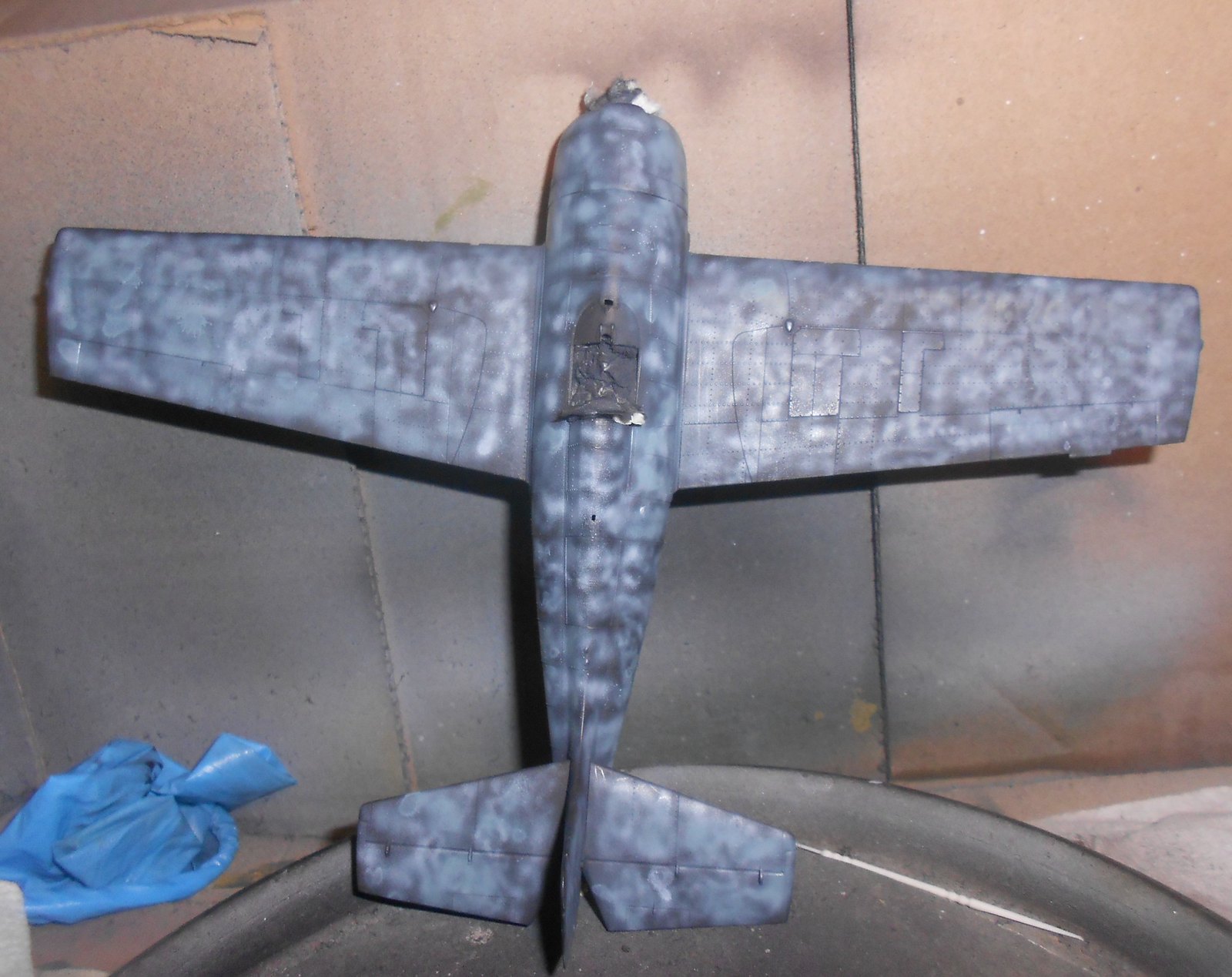 mottle by Eric Bergerud, on Flickr
mottle by Eric Bergerud, on Flickr
There are two reasons to black base. First, it gives the model a very irregular surface finish which I believe is appropriate for almost any military plane (or vehicle for that matter) that has seen service. Second, black basing replaces pre and post shading. I know many good modelers use these techniques, but I agree with Doog that aircraft surfaces are irregular and by no means follow panel lines. So preshading, even if not overdone, can make the surface too regular in appearance. After "mottling" is done, you spray a thinned base coat and build it up very slowly - stop sooner than you think you should. The result should be an irregular surface, ready for weathering. Here's what the Tomahawk looked like after I put the base colors, decals and clear coat. (I used camo masks - they were cheap but not of great value. The RAF Tomahawk wasn't out when I bought the kit, so RAF markings had to be aftermarket. I raided three different kits for the roundels - all smaller than normal in this theater - and bought canopy masks and aircraft ID markings from Montex. Good masks. However, the ID markings weren't decals but stencils. I don't think they were worth the extra time - there are good decals in our age. Anyway, the plane wears the marking of Clive Caldwell - the RAAF pilot who was the "top gun" for Desert Air Force, and the war's top P-40 ace with 22 kills. He added another five in the PTO flying Spits. One thing was essential - no shark's teeth. It was a German idea and shame on us for copying them. I will do no shark's teeth - ever. Just like I'll never build a Bismarck. I kept the kit's Chinese markings for use on an Eduard I-16 - more of those were flown by Chaing's birdmen than AVG P-40s. And no teeth - I'd also guess it's a very tricky decal.) Anyway: do note the very irregular surface finish:
 Fusebase by Eric Bergerud, on Flickr
Fusebase by Eric Bergerud, on Flickr
Next up was a heavy dose of salt fading that delivers a very splotchy appearance:
 salt by Eric Bergerud, on Flickr
salt by Eric Bergerud, on Flickr
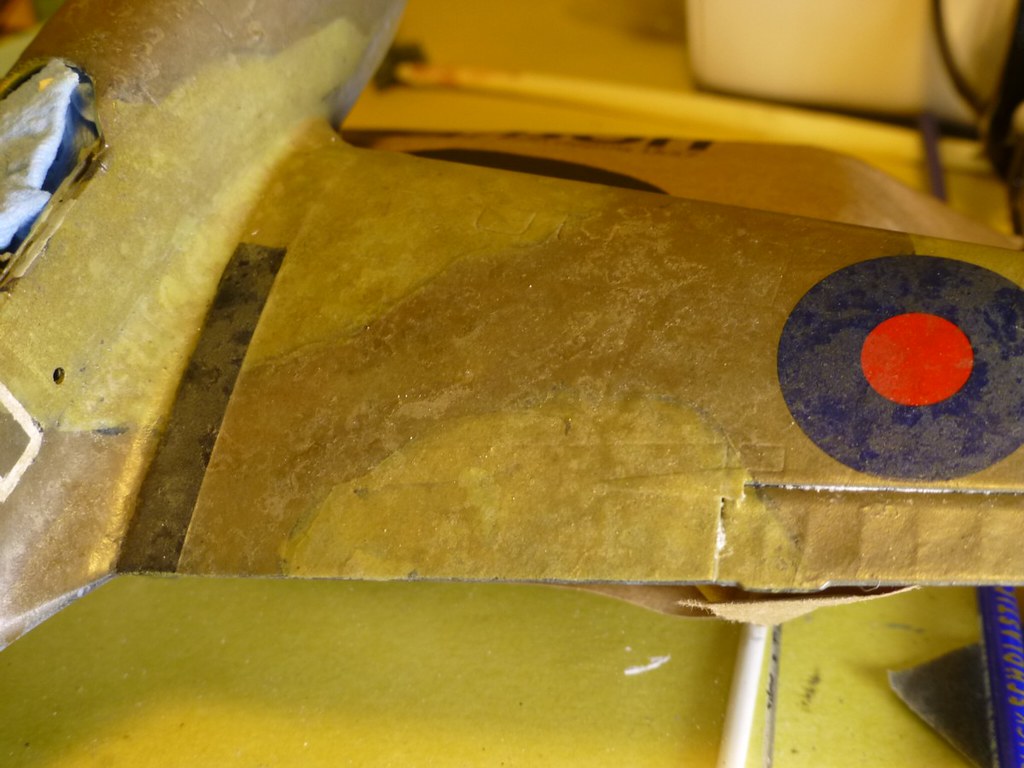 saltdet by Eric Bergerud, on Flickr
saltdet by Eric Bergerud, on Flickr
Now we want extra fading with oil dot. This is not done to "filter" but to fade. I took a tip from Doog and ran down a tube of Windsor "Transparent White" - a blending oil that's perfect for fading. As you can see I applied the dots with a tooth pick. I first work them around in circles with a small brush and then work them in harder with a flat. Different oil colors were used depending upon the base. On the second pic below, the right half of the wing has been "oiled" and the left side up to the wing root has not. I think you can see the difference. This both fades and also begins to moderate the salt fading and mottling:
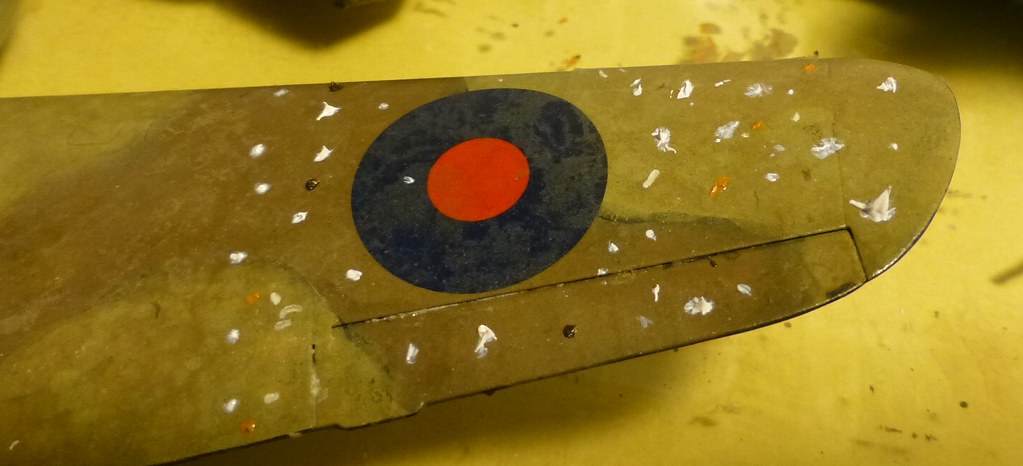 DF1 by Eric Bergerud, on Flickr
DF1 by Eric Bergerud, on Flickr
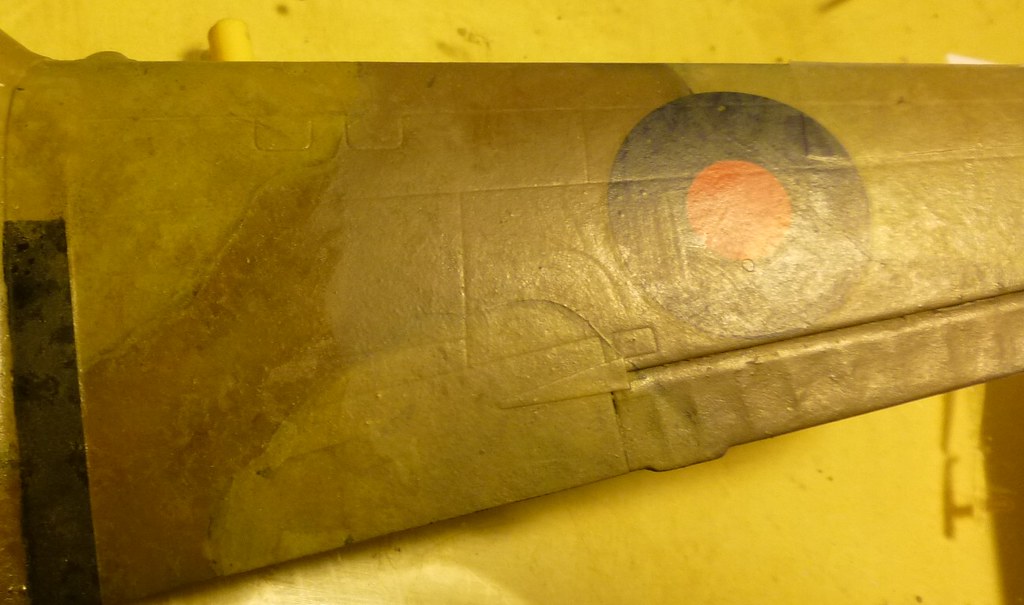 DFComp by Eric Bergerud, on Flickr
DFComp by Eric Bergerud, on Flickr
Here's the plane after black basing, salt and oils and ready for final weathering:
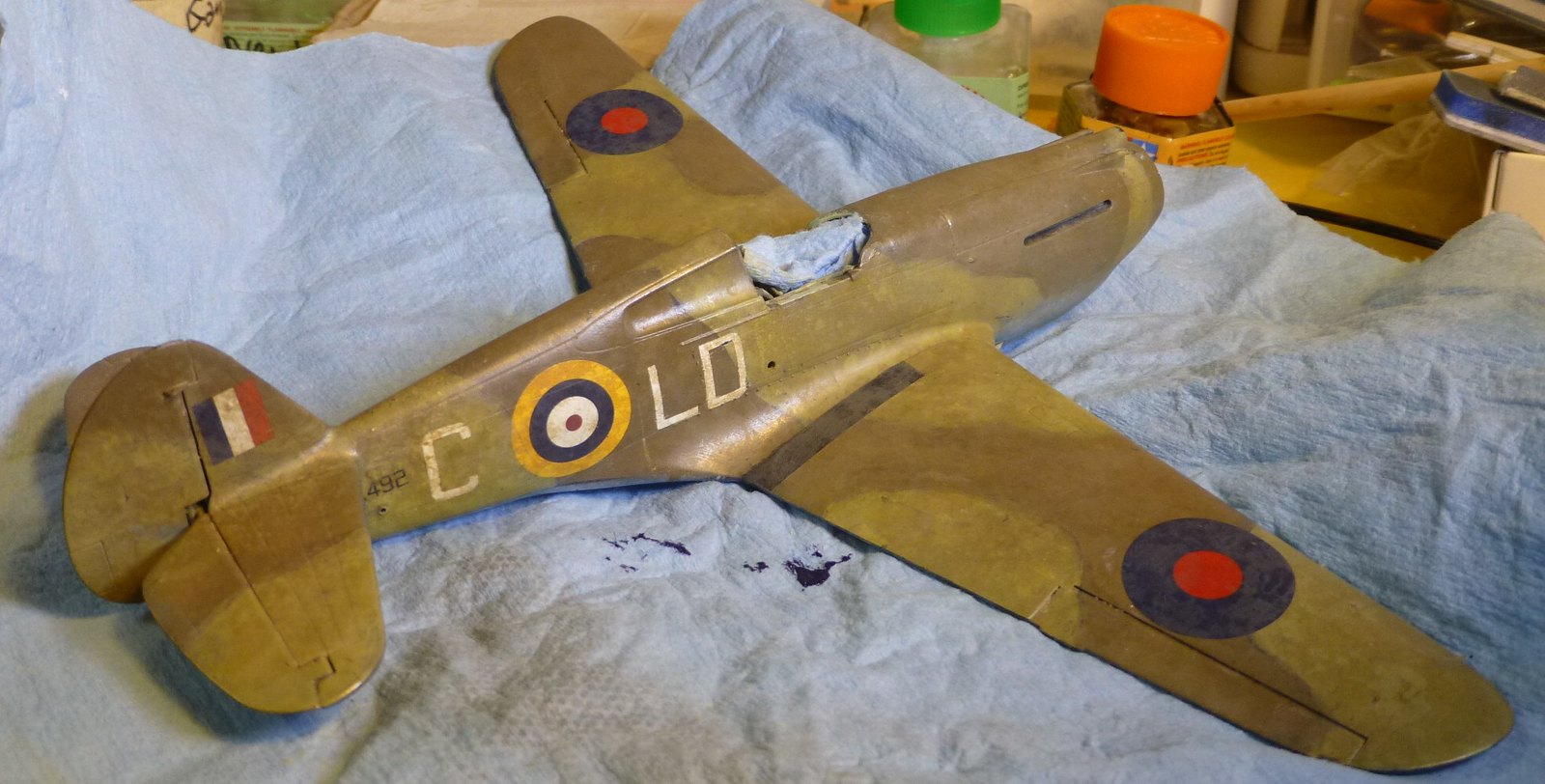 DFFus by Eric Bergerud, on Flickr
DFFus by Eric Bergerud, on Flickr
The last stage was applying panel lines and fluid stains. I did them with Iwata Com.Art "Transparent Smoke" paint which gives an indistinct image of minor panel lines and adds a coarse grime to the the surface that's not easy to see, but emphasizes the fade especially when the final matte varnish is applied. I used Com.Art "Old Oil" along with smoke for fluid and exhaust stains, especially up front. And, as this was a desert plane, I gave it a very light coating with loose Gamblin pigments at the end. (BTW: I use Windsor Newton Matte Varnish which is $9 but is simply super - that bottle will last for many kits. Thin with Gunze or Tamiya lacquer thinner. The matte "eggshell" effect is great.) Here's the result:
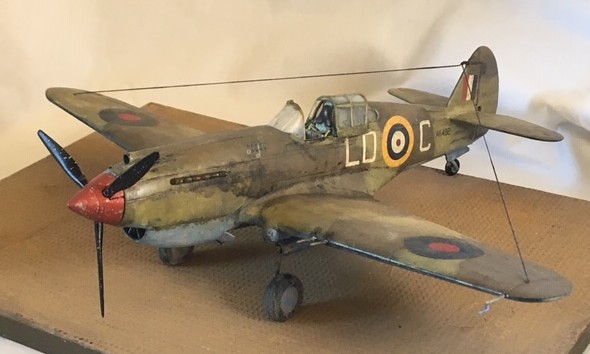 iplftft by Eric Bergerud, on Flickr
iplftft by Eric Bergerud, on Flickr
The P-40 was a good plane for Desert Air Force. The P-40B/C were given the name Tomahawk (they've got the sharp snout with twin mgs over the prop), the P-40E were Kittyhawks (different snout, six mgs on the wings). Either were better fighters than the Hurricane which had it's one day in the sun during the summer of 1940. (Had the RAF had nothing but Hurricanes, the BoB would have been a very tough nut. The Hurricane matched up badly with the 109 and could barely match the speed of the 110 at high altitude. It had an airframe that was really from the early 30s and that hurt. It proved a fine strafer when fitted with 20 or even 40mm cannon until superseded by the Typhoon.) P-40s also matched up pretty well with Macchis and 109s. On paper the bad guys were superior, but in the dust and heat of the desert, both Axis machines (and the Spit) required modifications which hurt performance. Also, when flying in bad conditions, no airplane matched "paper specs" - another advantage for the Detroit Iron school of military aviation. The Tomahawks began to appear in early 1941 and were used until late 1942 when Kittyhawks slowly replaced them. (Caldwell flew both.)
The desert would have been one of the worst environments for combat aircraft. The sun would do a number on the matte paints of that era - fading them in record time. (Paints weren't very good then, and some pigments like cadmium were allocated to other strategic uses, so even a new plane would wear fast in Libya.) And then there was the sand. I've talked to several vets of the Egypt/Libya and Tunisia and everyone remembers the dust, sand, dirt and flies. One guy told me the dust and sand got into everything - it was literally in the water. So I've looked at hundreds of desert theater aircraft in the last few weeks and they were a worn bunch. Obviously, how worn would vary. Planes lost were replaced with new ones. But in the early war, ground crew kept planes in the air that in 1944 would have gone to the scrap heap. One thing that you often notice are fluids - not always obvious where they come from. The exhaust pattern on P-40s was down and to the rear in a kind of arc - what I've got is about right I think. And, because there were guns, an engine, the exhaust system and fuel lines up front, the front end was pretty soiled. Here are some pics that inspired the "heavy weather" I applied.
 RAF6 by Eric Bergerud, on Flickr
RAF6 by Eric Bergerud, on Flickr
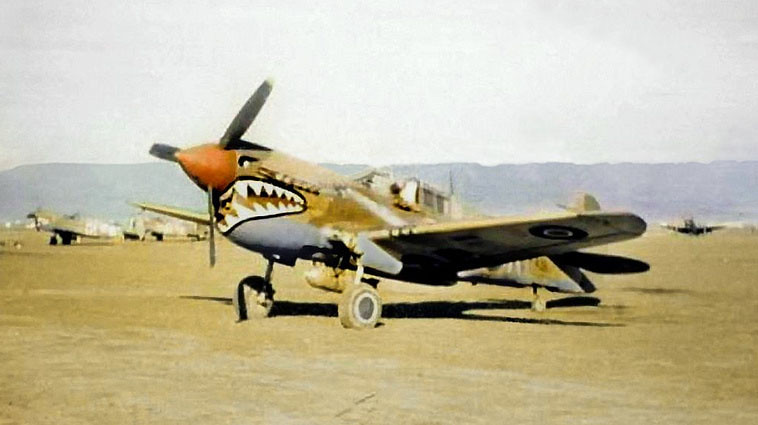 RAFcol by Eric Bergerud, on Flickr
RAFcol by Eric Bergerud, on Flickr
 RAAF2 by Eric Bergerud, on Flickr
RAAF2 by Eric Bergerud, on Flickr
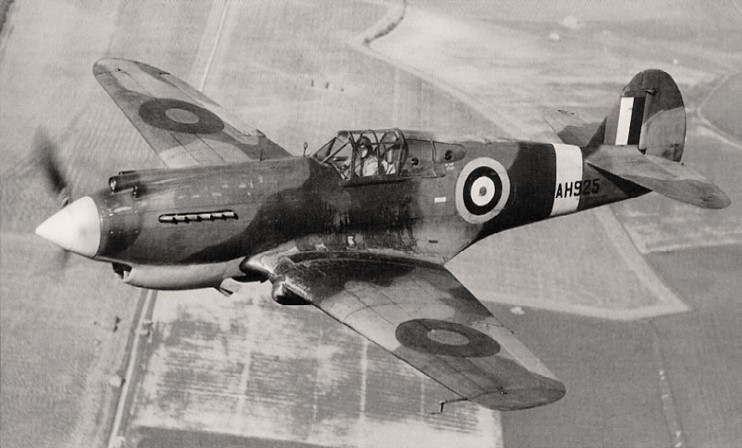 RAF4 by Eric Bergerud, on Flickr
RAF4 by Eric Bergerud, on Flickr
Here are some pics of my model. These detail shots - which you don't see looking at the kit from two feet away - show a closeup of the muli-layer weathering. It takes real time to make something look bad.
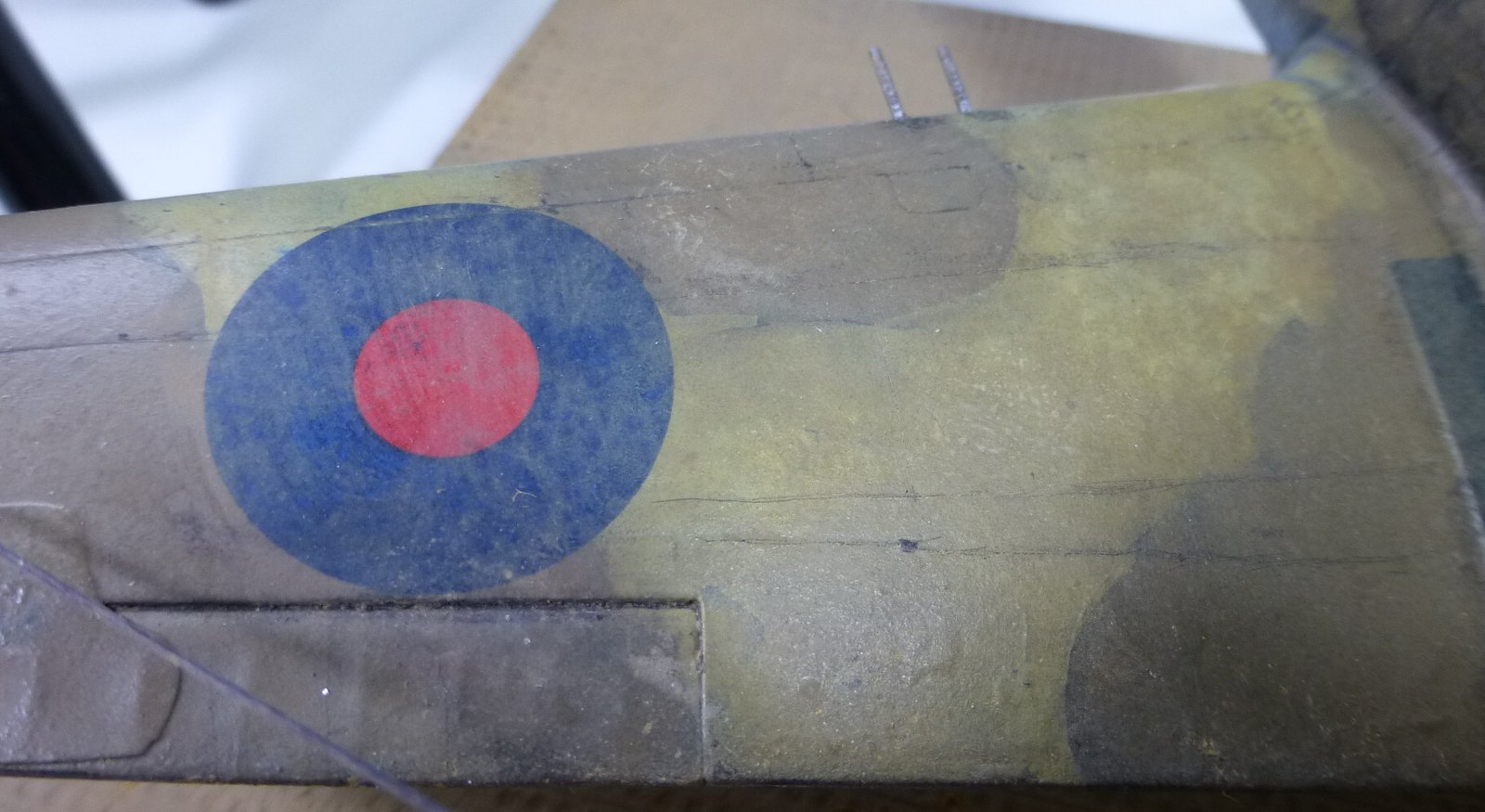 wngdet by Eric Bergerud, on Flickr
wngdet by Eric Bergerud, on Flickr
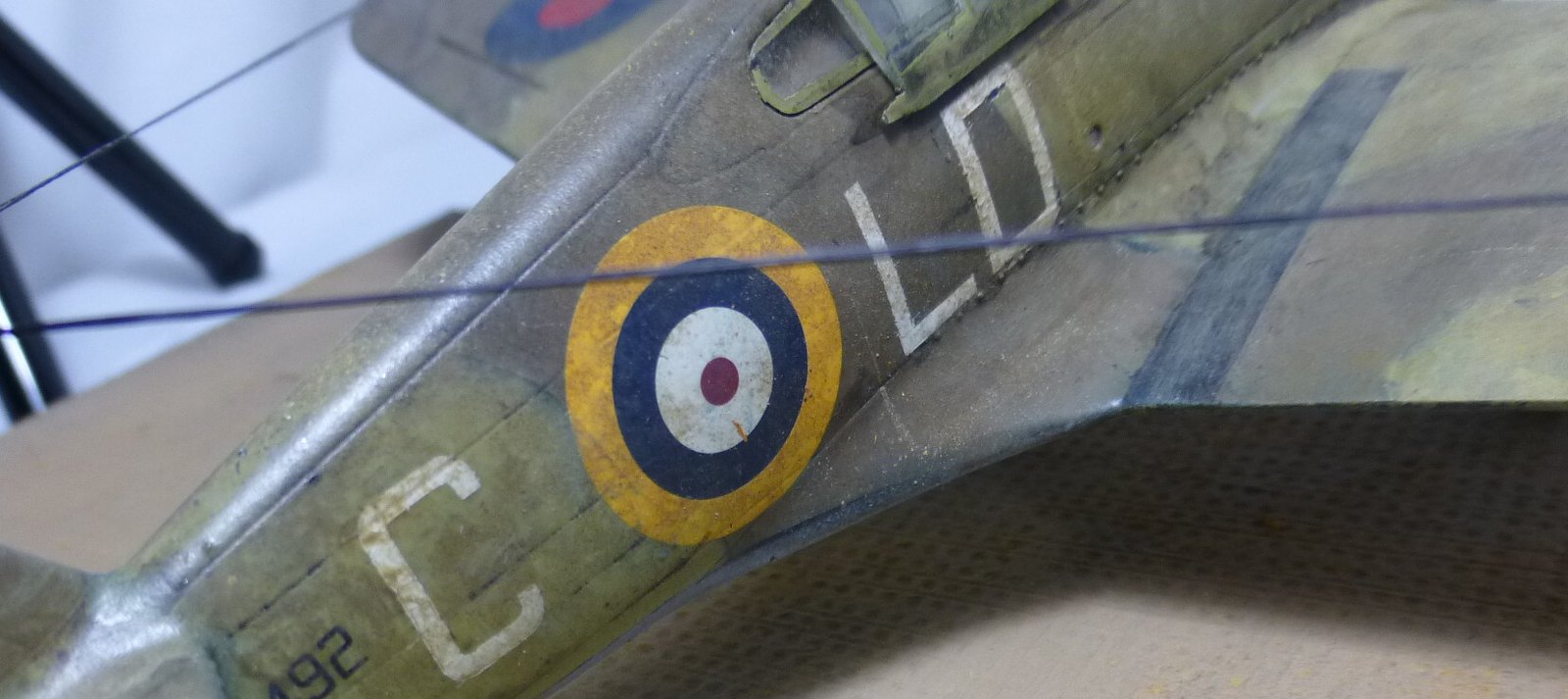 browndet by Eric Bergerud, on Flickr
browndet by Eric Bergerud, on Flickr
Here are some pics of the plane. I put it on a simple stand that I painted sand. I have no space for plane dios anyway. And I ran into one ugly trouble. I've got a very good Panasonic "point and shoot" camera, but for reasons that I can't figure, it didn't render the middlestone camo color well. In point of fact, there is green in RAF Middlestone, but the Panasonic amplified it. (So did a Nikon and a Canon.) I took a few thousand photos, or close, under different lighting etc and found I got closest to true color under a flash. So I had my wife use her iPhone 6S, and the color is almost perfect - a kind of tan with the slightest hint of green. There's a little sacrificed in detail, but it gives a good rendition. Just for kicks, the first pic below - a left side profile - came from my camera and the greenish tint on the middlestone is quite evident. The others are from the iPhone: the difference in color is easily seen. I really do have to figure this out. (Any ideas would be welcome.)
 left3! by Eric Bergerud, on Flickr
left3! by Eric Bergerud, on Flickr
 iplr3 by Eric Bergerud, on Flickr
iplr3 by Eric Bergerud, on Flickr
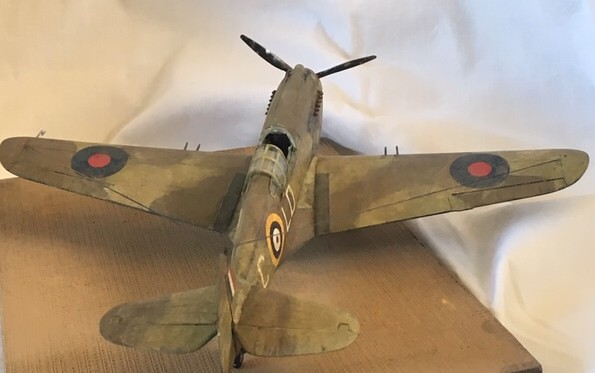 ipr by Eric Bergerud, on Flickr
ipr by Eric Bergerud, on Flickr
 iprft by Eric Bergerud, on Flickr
iprft by Eric Bergerud, on Flickr
 ipright2 by Eric Bergerud, on Flickr
ipright2 by Eric Bergerud, on Flickr
Eric